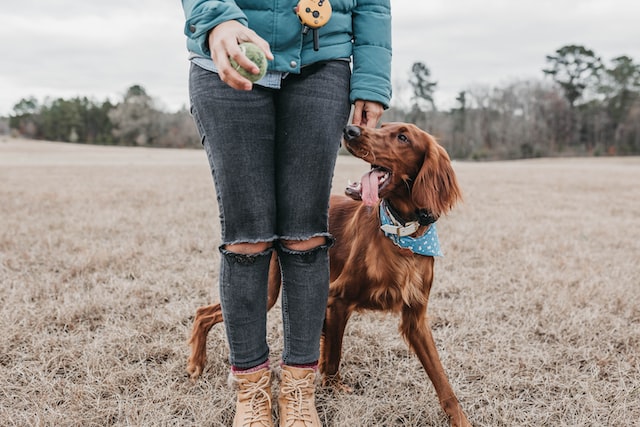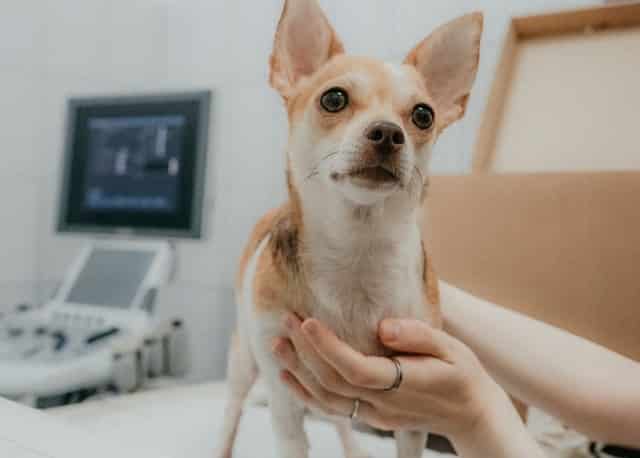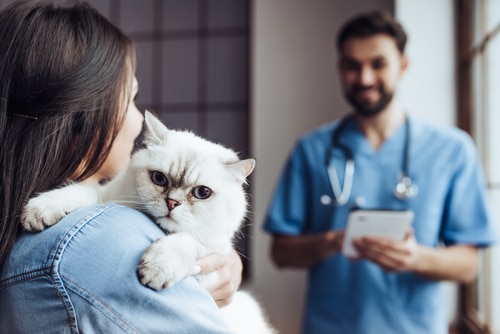Home » Blog » Pet » Pet Insurance Insights » 10 Tips for Comparing Pet Insurance in Australia Like a Pro
Categories
Tags
animal welfare
breed profile
buying a car
buying a pet
Car
car accessories
car care
car features
car insurance
Car safety
car sales
car service
cat
cat behaviour
cat body language
Cat Breeds
cat food
cat insurance
comprehensive car insurance
Dog
Dog Behaviour
dog body language
Dog Breeds
dog food
Dog Insurance
dog training
eco friendly cars
Kitten
New Car
pet accessories
pet activities
Pet Adoption
pet breeders
pet days of the year
pet fun stuff
Pet Health
pet insurance
pet parenting
Pet Safety
pet services
Puppy
rescue pets
road safety
road trip
safe driving
Recent Blog:
Facebook Posts
3 days ago
Growing old sometimes means we can’t take care of pets anymore. Find out some advice on what to do when this happens:![]()
![]() Senior Pet Parents – Contingency Plans for Your Pet – bit.ly/44bzwkS
... See MoreSee Less
Senior Pet Parents – Contingency Plans for Your Pet – bit.ly/44bzwkS
... See MoreSee Less
Senior Pet Parents' Contingency Plans for Pets
www.pd.com.au
Sometimes senior pet parents need more downtime. For older pet owners, this can be tricky to navigate if their dog or cat is full of beans and wants to5 days ago
Before you rev up the engine, let’s run through a checklist of things to do before starting your car. Not only do these steps ensure your safety (and that of others around you), but they also help in maintaining your vehicle's longevity.![]()
![]() Driving Tips: Your Checklist Before Starting Your Car -
... See MoreSee Less
Driving Tips: Your Checklist Before Starting Your Car -
... See MoreSee Less
Driving Tips: Your Checklist Before Starting Your Car
www.pd.com.au
Heading out for a drive? Hold up a second! Whether you're dashing off to work, running errands, or embarking on a road trip adventure, there are a few1 week ago
Are intestinal worms setting up camp in your dog’s gut without paying rent? Here’s how to spot the main culprits and get rid of them too:![]()
![]() Preventing, Identifying and Treating Intestinal Worms in Dogs - bit.ly/43YjCKu
... See MoreSee Less
Preventing, Identifying and Treating Intestinal Worms in Dogs - bit.ly/43YjCKu
... See MoreSee Less
Preventing, Identifying and Treating Intestinal Worms in Dogs
www.pd.com.au
Intestinal worms, such as roundworms in dogs are one of the least glamorous topics on the planet. These intestinal parasites that basically use our dogsKnowing how to compare the pet insurance market in Australia can help you get the best cover for your pet and your pocket. Unlike human health insurance, pet health insurance is a little newer so it can sometimes be confusing knowing where to begin.
It’s super important to ensure the insurance cover you end up choosing fits your budget, absolutely. Look closely at what you’ll be paying each month and make sure it works with your household finances.
Then understand that cost is one of the several factors you should work through before making the decision (then reaping the rewards of safeguarding your savings and your pet’s health!) Hopefully we can help…
In this article PD Insurance covers 12 top tips to get you started:
- Your pet’s profile. Cat or dog, Pug or Persian, couch potato or sporty spice, etc.
- Plan types. Accident cover, accident and illness cover or extra comprehensive cover.
- Inclusions. Diagnostic tests, surgery, medication, vet hospital stays, etc.
- Exclusions. Congenital conditions, pre-existing conditions, etc.
- Annual limit. $10,000 p/year for your total claims, for example.
- Sub-limits. i.e.: $2,000 per a certain claim type.
- Contract (and added fees). Besides your main premium check whether there are other added fees.
- Claims process. Process (paper, phone, online, etc.) and turnaround time (days, weeks or months).
- Excess structure. Fixed dollar sum per claim vs % per bill.
- Waiting periods. X number of days before you can claim for Y or Z, etc.
- Wellness benefits. Cover for anticipated events like desexing and vaccinations.
- Discounts. Multi-pet discounts, starter insurance discounts, etc.

#1 Your pet
Did you know pet insurance providers tailor their cover and costs to your pet’s profile? That’s right, because different types of pets (e.g. dog, cat) and different breeds’ needs can vary. Other factors include health and age.
For example, kittens and puppies are less likely to have arthritis than adult dogs and cats. However when they’re small and full of zoomies they’re also more likely to get into accidents and more prone to infections as their maternal immunity wears off.
If you have a purebred dog or purebred cat, knowing this gives you valuable insights about hereditary conditions they might be more susceptible to. For instance, brachycephalic breeds are prone to breathing difficulties that can require surgery and big breeds carry more weight so are more likely to experience hip dysplasia.
Researching your breed’s health needs will help steer you in the right direction so you can choose the cover that’s most suited to your furbaby. Now and into the future.
#2 Comparing types of pet insurance in Australia
So you’re doing your homework and comparing pet insurance costs in Australia. That’s great! Besides costs, you’ll want to know what is and isn’t covered. Consider this against your pet’s needs and your budget and voila.
Here are the four main pet insurance plans in Australia:
| Accident | Accident cover is the most affordable and basic cover for accidents that cause injuries. This covers a range of emergency care and can include X-rays, surgery, bloodwork, medication and vet consultation fees. |
| Accident/illness | This plan costs a tiny bit more but also covers illness, which isn’t included in accident only. Illness can strike anytime and can be lifelong, needing ongoing payments. This includes infection, disease, allergy and illnesses that are hereditary. |
| Comprehensive | This covers both accident and illness and also includes a wide range of specialist treatments like dental cover for gum disease, tooth removal and abscesses. |
| Third-party liability | This cover helps you pay for costs your pet causes to other people by damaging them, their pets or their property. If you’re with PD then third party liability pet insurance is included in all our plans already. Some insurers don’t offer it at all! |
When you compare the pet insurance market in Australia, it’s wise to choose a few local insurers and look at how their offerings contrast. Measure their pricing against what’s included in each plan. See what other customers are saying and how well they rank when it comes to Google reviews, awards etc.
Then choose a plan with the price tag that’s likely to give your pet (and wallet) the best protection. Read more on pet plan shopping in Australia to see what pet parents’ top worries are for pets.

#3 Inclusions
What your plan includes is super important. Not only should you be able to base this on what your pet’s possible needs might be for this year (like protection after eating poisonous stuff or other types of accidents) but also potential long term health needs too.
If you have a Ragdoll cat they’re likelier to need dental cover, for example. If you have a German Shepherd then seriously consider cover for hereditary conditions (different to congenital conditions).
Take some time to read and compare different pet insurance providers’ policy wording around inclusions. In addition to knowing about common cat and dog health problems by breed, you might want to chat with your vet to get their insight. They can discuss what type of health concerns you want your pet insurance cover to include.
#4 Exclusions
Insurers can help pay for a wide range of pet healthcare costs. But when you compare pet insurance in Australia, it’s wise to get familiar with what’s NOT included.
Pet insurance is similar to human health insurance in that it very likely won’t cover conditions pets already have when you sign up. (These are known as pre-existing conditions). Certain breeds and behavioural conditions might also be excluded. Another consideration is that some plan types only cover pets of a certain age.
So when should you get pet insurance? Ultimately the best time is when your pet is little and at their healthiest. That’s when there are fewer exclusions that’ll carry through as your pet matures.

#5 Annual limit
How much are you paying per month or year and what annual benefit limit can you claim for that? The annual defined benefit limit is how much you can claim for all possible (covered) mishaps that happen to your pet over the course of a year.
For example, your annual defined benefit limit could be $5,000, $10,000 or $20,000 depending on the plan type/level of cover you choose. If your pet gets injured by a car, eats something poisonous and develops diabetes or allergies that require ongoing treatment, will your annual limit be the right amount?
These are questions to ask when choosing your annual limit.
#6 Sub limits
In addition to carefully choosing your annual limit, take note of any sub-limits that can apply to certain claim types. For example, perhaps you can only claim up to a certain amount over a year for particular types of illnesses.
Familiarise yourself with any sub-limits and what they relate to and compare this to your pet’s profile and likely needs. This gives you a good understanding of whether these are restrictive on your/your pet’s needs.

#7 Contract type and added fees
Are you signing up to a lock-in contract where you are tied in for a year, or years? You might want to choose a no lock-in contract because if you decide to cancel your plan or change to another insurer you’re not as likely to incur added fees.
Other added fees could include admin fees for changing between different levels of cover/annual defined benefit with the same insurer. If these apply it’s also cause for considering the plan your pet is likeliest to benefit from in the long run and choose that one from the very start.
#8 Claims process
When you’re comparing the pet insurance market in Australia, you might discover they all sound great – but the real measure is when it comes time to claim.
If you’re making a claim it means something’s happened to your pet, they’re unwell or recovering (or ideally well again). You’ve been to the vet with them and had them treated and the last thing you need is more to worry about. This is why you want to choose pet insurance that’s easy to claim.
Does the claims process happen fast? Is it easy to submit your claim and can you do it online at a time that suits your schedule, not the insurer’s? Are you likely to receive the fair and correct amount as reimbursement? Will that be a timeous reimbursement?
Not everyone knows this, but a slick claims process also reduces the burden of admin on your vet. Find out more about how pet health affects vet mental health.

#9 Excess structure
Once you’re au fait with your annual benefit limit and any sub-limits, you should also read up on what excesses might apply to you. An excess is the contribution you make towards a claimable event.
Your insurer will reimburse up to the defined limit when you make a claim, minus the excess. The type of excess structure your insurer offers is important.
For example, are you paying a fixed dollar amount excess towards your pet’s health bills, or a co-payment? Co-payments can reduce your monthly premiums because you and the insurer share payment of pet health bills. For example, let’s say the insurer is responsible for 70% or 80% of every bill and you pay 20-30%.
If your bill is big then paying a percentage could be a massive unexpected cost while paying a fixed dollar amount may put you in a better financial position because it’s always going to stay the same.
Also look at whether the excess is charged on each bill you claim for, or just once for that whole claimable event. Again, the difference can be massive.
#10 Waiting periods
When you’re comparing the pet insurance offers on the Australian market, also check your waiting periods. Not only can you usually not get cover for pre-existing conditions, you usually can’t immediately claim after starting your pet’s pawlicy either.
Like human health insurance or even car insurance, pet insurance has waiting periods to reduce the risk of fraud. This helps prevent not-so-honest people from signing their ill or injured pet up for a plan (and not disclosing it) so they can claim right away.
Each set of health needs will have different waiting periods – another reason to start pet health cover as early as possible – though sometimes you’ll encounter a 0 day waiting period for accidents.
Also, when you’re comparing pet insurance waiting periods in Australia, know that some providers will waive your waiting periods if you’ve been with an insurer and you’re switching across.

#11 Wellness benefits
Pet insurance is all about having a financial protection in case of the unexpected. Like human health care, vet treatment relies on years of specialised knowledge and experience as well as equipment and technology. It’s costly for vets to practice and it’s costly for pet owners so having pet insurance is a cushioning measure.
Unexpected medication, overnight stays, surgery, X-rays, consultations, blood tests and more can amount to a pretty penny that your plan helps you pay.
In contrast, Wellness cover pays for the known costs for pet care. These include things like spaying and neutering and vaccinations. When you compare pet insurance in Australia, it’s worth weighing up the added cost of having a wellness benefit as part of your plan vs using your savings or income for these anticipated costs.
One big reason for not relying on wellness cover for these costs is that they’re known costs for which you can usually budget a set amount. Here’s more on doing a pet insurance comparison.
#12 Comparing pet insurance discounts in Australia
When comparing the pet insurance market in Australia, check what discounts you’re eligible for. These can be a great buffer when you choose a plan, helping reduce premiums or even getting you a limited time of free pet insurance.
If you’re signing up with multiple pets, switching insurers or have very young pets you might be in line for great discounts. PD Insurance, for example, gives you one or more months of FREE cat insurance or dog insurance when you buy your pawlicy online. It’s super easy to buy a plan and just as easy to use it when you need it.
Find out more about our award winning plans – click below to get a quote.
Share On:




